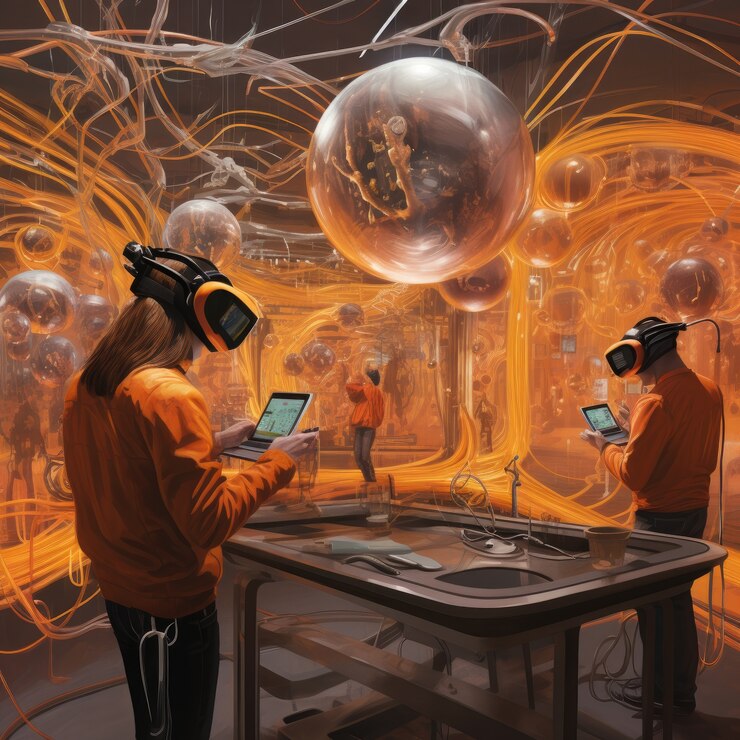The Future of Microcreation: Trends to Watch
October 9, 2024IN BLOG POSTS TEAM BUILDING BY Micro Creation

Introduction
Microcreation has emerged as a significant force in the realms of creativity, innovation, and business. As we move further into the digital age, this approach of breaking down large projects into smaller, manageable tasks continues to gain traction. It empowers individuals and organisations to explore new possibilities while maintaining flexibility and fostering collaboration. In this blog, we will explore the future of microcreation, highlighting key trends to watch and how they may shape various industries.
1. Increased Focus on Personalisation
One of the most notable trends in microcreation is the growing emphasis on personalisation. As consumers increasingly seek tailored experiences, businesses are recognising the need to create customised products and services. Microcreation allows companies to gather feedback and insights from smaller target groups, enabling them to tailor their offerings to specific preferences.
For instance, in the fashion industry, brands are using microcreation to design limited-edition collections based on customer input. By involving consumers in the design process through surveys or social media polls, companies can ensure their products resonate with their audience. This trend towards personalisation will likely expand, leading to more engaging and relevant experiences for consumers.
2. Integration of Artificial Intelligence (AI)
Artificial intelligence is transforming various industries, and microcreation is no exception. As AI technologies advance, they are being integrated into the microcreation process to enhance efficiency and creativity. AI can analyse data, identify patterns, and generate ideas, providing valuable insights to creators.
For example, AI-driven tools can assist writers by suggesting content ideas or generating drafts based on specific themes. In graphic design, AI can create templates or assist with colour palettes, allowing designers to focus on the more creative aspects of their work. As AI continues to evolve, its role in microcreation will likely expand, enabling creators to produce high-quality work with less effort.
3. Emphasis on Collaborative Platforms
The future of microcreation will be heavily influenced by the rise of collaborative platforms. As remote work becomes more common, tools that facilitate teamwork and communication are increasingly essential. These platforms enable individuals to work together on microcreation projects, regardless of their geographical locations.
Collaboration tools, such as project management software and online whiteboards, will play a crucial role in streamlining the microcreation process. Teams can break down tasks, share ideas, and track progress in real-time, leading to greater efficiency and creativity. This trend towards collaboration will foster a sense of community among creators, encouraging knowledge sharing and inspiration.
4. Rise of Content Co-Creation
Co-creation is becoming an integral part of the microcreation landscape. Brands and creators are increasingly involving their audiences in the content creation process. This trend allows consumers to have a voice and play an active role in shaping products and experiences.
For example, companies may invite customers to share their ideas for new product features or participate in the development of marketing campaigns. This collaborative approach not only fosters a sense of ownership among consumers but also results in content that resonates more deeply with the target audience. As co-creation continues to gain popularity, we can expect to see more brands embracing this model in their microcreation strategies.
5. Growing Importance of Sustainability
As environmental concerns become more pressing, sustainability is emerging as a key focus for many creators. Microcreation allows individuals and businesses to explore sustainable practices in their projects. By breaking down larger initiatives into smaller, manageable tasks, creators can implement eco-friendly strategies without overwhelming themselves.
For instance, a company may start by reducing packaging waste in its products before exploring broader sustainability initiatives. This incremental approach makes it easier to adopt sustainable practices and assess their impact over time. As consumers increasingly prioritise sustainability, the integration of eco-friendly practices in microcreation will become essential for brands aiming to remain relevant.
6. Expansion of Digital Platforms for Creative Expression
The digital landscape is continuously evolving, and new platforms for creative expression are emerging all the time. Social media, blogging platforms, and video-sharing sites provide individuals with opportunities to showcase their microcreation projects. As these platforms expand, creators will have more avenues to share their work and connect with like-minded individuals.
In particular, platforms that support short-form content, such as TikTok and Instagram Reels, are transforming the way creators engage with their audiences. These platforms encourage quick, impactful microcreation projects that can go viral and reach a wider audience. As the popularity of digital platforms continues to grow, we can expect to see a surge in microcreation content across various media formats.
7. Personal Development Through Microcreation
Microcreation is not only about producing tangible results; it also serves as a powerful tool for personal development. As individuals engage in microcreation projects, they enhance their skills, boost their confidence, and cultivate a growth mindset. This trend will likely gain momentum as more people recognise the value of microcreation in fostering personal and professional growth.
Workshops, online courses, and community events centred around microcreation will become increasingly popular. These opportunities will allow individuals to learn new skills, share their experiences, and collaborate with others. The focus on personal development through microcreation will empower individuals to pursue their passions and achieve their goals.
8. Diverse Applications Across Industries
The versatility of microcreation means it can be applied across a wide range of industries. From education and healthcare to marketing and entertainment, microcreation is set to make an impact in various sectors. Educational institutions are embracing microcreation as a way to encourage student engagement and creativity. By breaking down assignments into smaller tasks, educators can foster a more dynamic learning environment.
In healthcare, microcreation can improve patient engagement and outcomes. Healthcare providers may use microcreation to develop personalised care plans, allowing patients to take an active role in their treatment. As organisations across industries recognise the benefits of microcreation, its applications will continue to diversify.
9. Focus on Well-being and Mindfulness
In a world where mental health and well-being are increasingly prioritised, microcreation offers a mindful approach to creativity. Engaging in small, manageable projects can provide a sense of accomplishment and fulfilment, contributing to overall well-being. This trend towards mindfulness in microcreation will encourage individuals to approach their projects with intention and reflection.
Creative practices that promote well-being, such as art therapy and journaling, will gain traction as people seek out meaningful activities that enhance their mental health. The future of microcreation will likely incorporate elements of mindfulness, encouraging individuals to engage with their projects in a way that nourishes their creativity and mental well-being.
10. The Rise of Gamification in Microcreation
Gamification is an innovative approach that applies game design elements to non-game contexts. As microcreation continues to evolve, we can expect to see an increase in gamified experiences that encourage creativity and engagement. By incorporating elements like rewards, challenges, and leaderboards, creators can motivate themselves and others to participate in microcreation projects.
For example, a fitness app may use gamification to encourage users to set and achieve micro-goals, such as completing a certain number of workouts each week. Similarly, creative platforms might introduce challenges that reward users for completing microcreation tasks, fostering a sense of community and friendly competition. As gamification becomes more prevalent, it will enhance the appeal of microcreation projects and encourage greater participation.
Conclusion
The future of microcreation is bright, with numerous trends shaping its evolution. As we move forward, personalisation, AI integration, collaboration, sustainability, and gamification will play significant roles in the microcreation landscape. By embracing these trends, individuals and organisations can unlock new possibilities for creativity, innovation, and personal growth.
As microcreation continues to gain momentum, it offers a pathway for meaningful engagement and transformation. Whether you’re an individual exploring your creative potential or a business seeking to innovate, the trends in microcreation provide valuable insights for the future. Embrace the possibilities, stay curious, and watch as microcreation shapes the way we create, collaborate, and connect in the years to come.


Leave a Comment